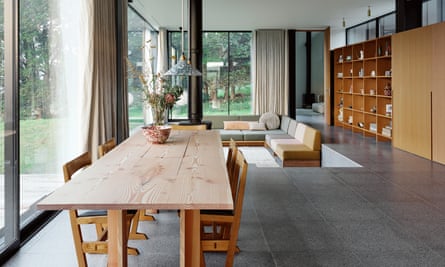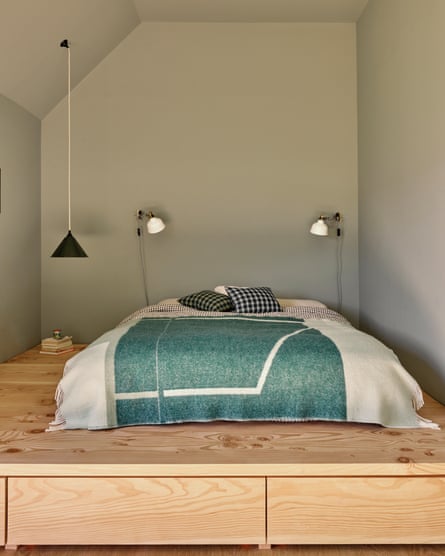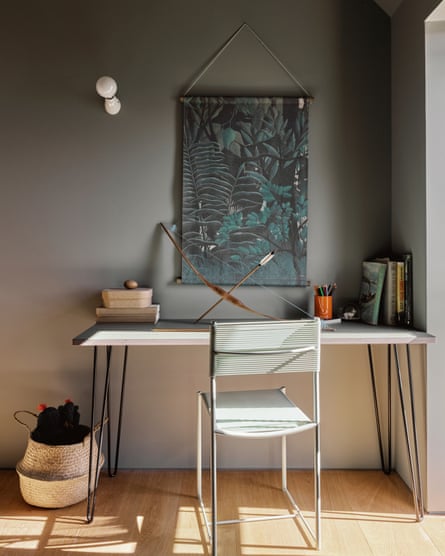
In 2013, Jill Macnair and her husband, Neil, bought a field on the edge of Loch Tay in Perthshire. The loch is a long, narrow stretch of dark water flanked by the Ben Lawers mountain range. The area had made a lasting impression on the couple almost 10 years previously when Macnair’s father had led them on a cycling expedition that skirted the south side of the loch. “The beauty of the landscape hit us both,” Macnair recalls.
Years later – married with two kids and living in London – the young family were on holiday on the Isle of Mull when Neil saw an ad for a field with planning permission. “We weren’t particularly thinking of doing anything like this,” says Macnair, “but we had such lovely memories of the area. On the drive back home, we took a detour to go and see it.”
Macnair was bought up in a suburb of Glasgow. “My dad is a lover of Scotland,” she explains. “He has always been into walking and climbing Munros, so I was often exposed to what lies beyond the suburbs from a young age.” Having lived and worked in London for 20 years, she had begun to “attach more meaning” to a broader sense of Scotland. “I think I wanted to create a forever connection to Scotland for my kids,” she reasons. “And this field was a way to do that.”
Macnair studied interior architecture before segueing into design journalism. She wrote for interiors magazines for 14 years and, in 2009, co-founded the successful interiors blog, My Friend’s House, which ran for more than a decade. But the field on Loch Tay precipitated a change in direction. “It made me realise that actually I just wanted to get back to design,” she explains. “In many ways, the house in Scotland became a massive learning exercise for that.”
The remote field – which is a 10-minute drive from the nearest village – came with planning permission for an imposing house, but Macnair had her own ideas. She contacted her childhood friend, Kirsty Lees, who had recently established a local architecture practice with her partner, David McMillan. “It was a no-brainer,” she says of the decision to work with her friend. “I’ve always appreciated Kirsty’s sense of style.”
So began a long-distance conversation between the two friends. The design that gradually emerged deliberately references Scottish longhouses – robust, single-storey structures built to withstand the elements. For Macnair, “massive views” were fundamental, so Lees designed a structure that is both solid and see-through. The zinc-clad first floor appears to hover above the ground level, which is made of stone. “When you approach the house, you get this brilliant sliver of a view reaching through the building to the loch,” Macnair explains.

Inside, floor-to-ceiling glazing gives the sensation of “living within the view”. The materials – terrazzo, concrete and handmade tiles – also match what’s going on outside. “This is an outdoorsy kind of place,” says Macnair. “It’s about being able to come inside with your wellies on, but it’s also about what can be quite a brutal and bleak landscape. With the interiors, I felt I had to be almost deferential to that fact.”
The ground floor consists of an open-plan kitchen, dining area and sunken living room and is organised by a central piece of joinery that acts as both room divider and storage space. On one side is a hallway bench for pulling on walking boots, on the other is kitchen storage. A library wall leads towards a separate area that functions as a family snug with a mezzanine study area. Upstairs are three bedrooms and a family bathroom, all of which drink in the views beyond.
Warmth is conjured through careful colour combinations. “I spent a long time carrying fabric samples around in my pocket,” Macnair says. The sunken sofa and patchwork curtains in the bedrooms were carefully composed to match shades of the Scottish landscape.

Unsurprisingly, there are a handful of design classics here. In the snug, a Muller Van Severen hanging lamp stretches up into the apex of the ceiling. Martino Gamper’s Arnold Circus stools feature in the breakfast nook and at the dressing table in the master bedroom. In the kids’ rooms, Giandomenico Belotti’s Spaghetti chairs are tucked under desks. “Italian design is a massive influence on me,” admits Macnair. “And I do like mixing slightly blingy things with much more down-to-earth items. I think that’s the Scottish in me – I don’t like things to be too pretentious. It’s not enough to love something: it has to work in the space.”
The overall result is calm and cosseting, a space that simply feels good to be in. “We initially thought that this would be a party house – a place to host friends and family,” Macnair reflects. “We do do that here, but the house is at its most delicious when it’s just the four of us. It really is the most healing place to be.”


